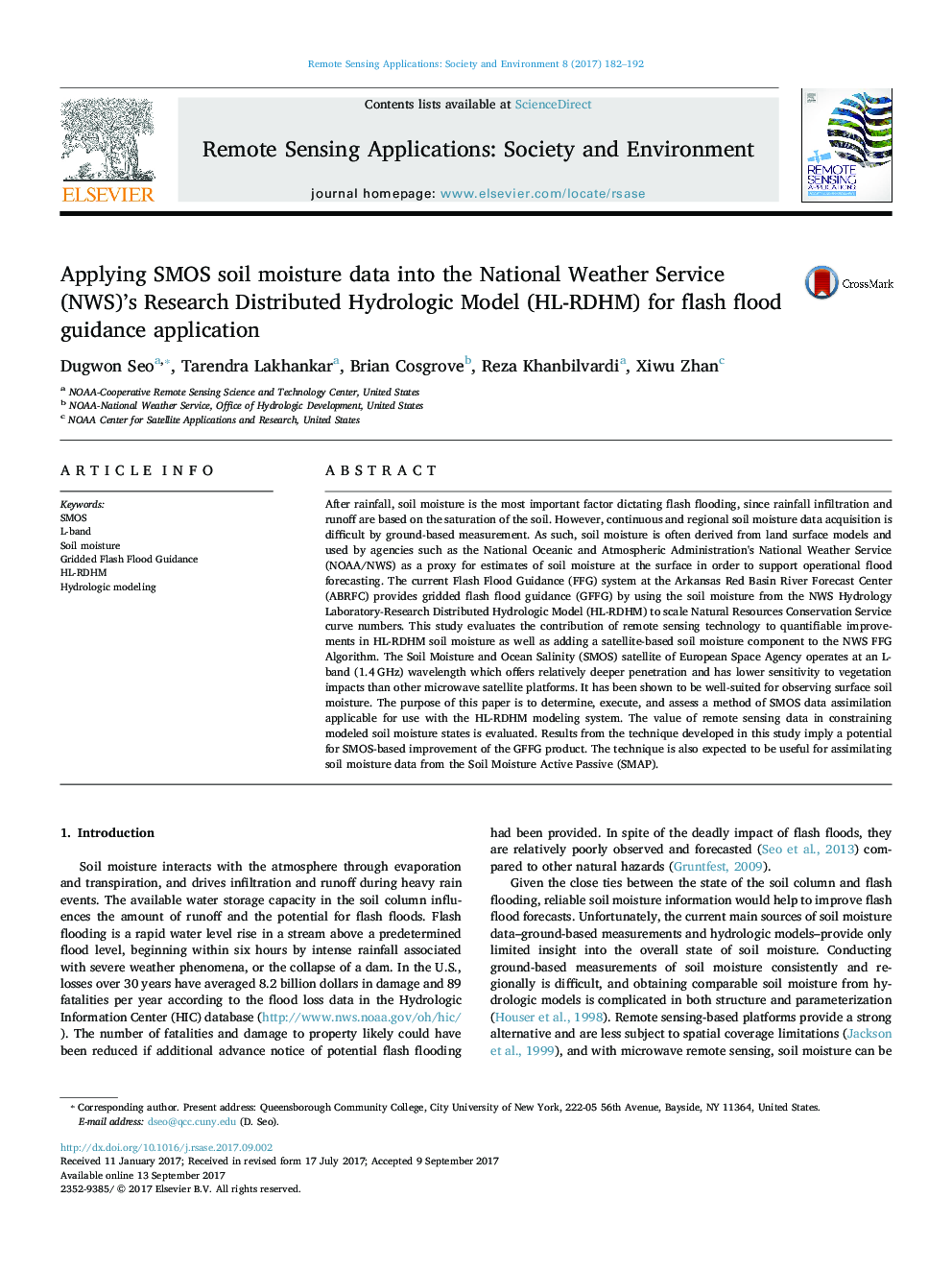| کد مقاله | کد نشریه | سال انتشار | مقاله انگلیسی | نسخه تمام متن |
|---|---|---|---|---|
| 5754613 | 1620999 | 2017 | 11 صفحه PDF | دانلود رایگان |
عنوان انگلیسی مقاله ISI
Applying SMOS soil moisture data into the National Weather Service (NWS)'s Research Distributed Hydrologic Model (HL-RDHM) for flash flood guidance application
دانلود مقاله + سفارش ترجمه
دانلود مقاله ISI انگلیسی
رایگان برای ایرانیان
موضوعات مرتبط
مهندسی و علوم پایه
علوم زمین و سیارات
کامپیوتر در علوم زمین
پیش نمایش صفحه اول مقاله

چکیده انگلیسی
After rainfall, soil moisture is the most important factor dictating flash flooding, since rainfall infiltration and runoff are based on the saturation of the soil. However, continuous and regional soil moisture data acquisition is difficult by ground-based measurement. As such, soil moisture is often derived from land surface models and used by agencies such as the National Oceanic and Atmospheric Administration's National Weather Service (NOAA/NWS) as a proxy for estimates of soil moisture at the surface in order to support operational flood forecasting. The current Flash Flood Guidance (FFG) system at the Arkansas Red Basin River Forecast Center (ABRFC) provides gridded flash flood guidance (GFFG) by using the soil moisture from the NWS Hydrology Laboratory-Research Distributed Hydrologic Model (HL-RDHM) to scale Natural Resources Conservation Service curve numbers. This study evaluates the contribution of remote sensing technology to quantifiable improvements in HL-RDHM soil moisture as well as adding a satellite-based soil moisture component to the NWS FFG Algorithm. The Soil Moisture and Ocean Salinity (SMOS) satellite of European Space Agency operates at an L-band (1.4Â GHz) wavelength which offers relatively deeper penetration and has lower sensitivity to vegetation impacts than other microwave satellite platforms. It has been shown to be well-suited for observing surface soil moisture. The purpose of this paper is to determine, execute, and assess a method of SMOS data assimilation applicable for use with the HL-RDHM modeling system. The value of remote sensing data in constraining modeled soil moisture states is evaluated. Results from the technique developed in this study imply a potential for SMOS-based improvement of the GFFG product. The technique is also expected to be useful for assimilating soil moisture data from the Soil Moisture Active Passive (SMAP).
ناشر
Database: Elsevier - ScienceDirect (ساینس دایرکت)
Journal: Remote Sensing Applications: Society and Environment - Volume 8, November 2017, Pages 182-192
Journal: Remote Sensing Applications: Society and Environment - Volume 8, November 2017, Pages 182-192
نویسندگان
Dugwon Seo, Tarendra Lakhankar, Brian Cosgrove, Reza Khanbilvardi, Xiwu Zhan,